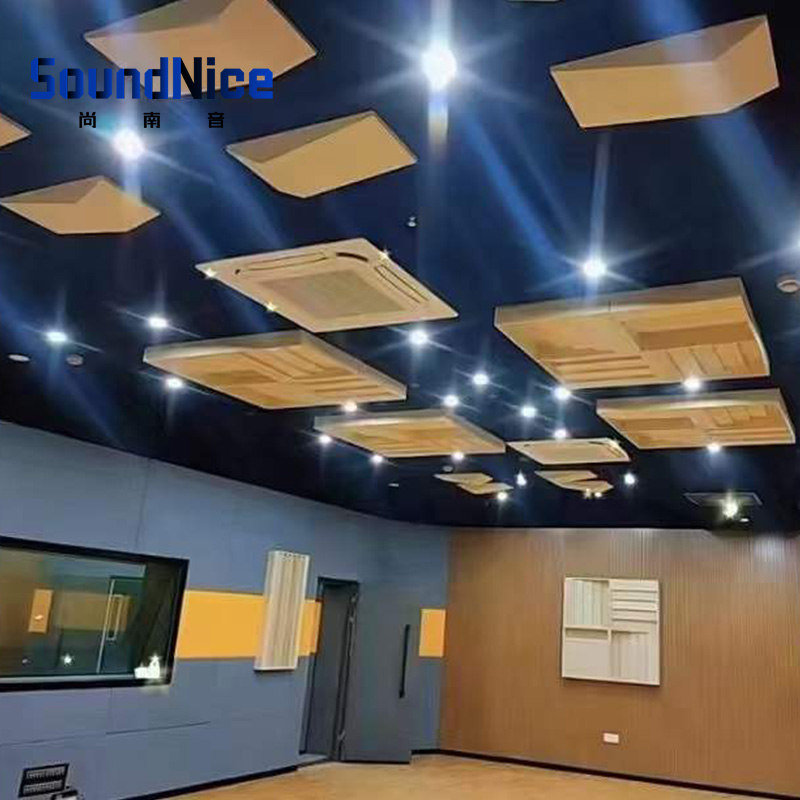
Do Acoustic Panels Really Work?
In the realm of interior design and architectural acoustics, the significance of acoustic treatment cannot be overstated. The acoustic characteristics of a room can significantly impact the way sound behaves within it, affecting not only comfort but also the overall experience of the space. Acoustic panels, a commonly employed solution, have garnered attention as a means to address acoustic issues. Do Acoustic Panels Really Work?
How Acoustic Panels Work
Acoustic panels are designed to absorb sound energy and reduce its reflection, effectively controlling the acoustics of a given space. They function through a process called sound absorption. When sound waves encounter an acoustic panel, they penetrate the panel's surface and cause the material to vibrate. These vibrations, in turn, generate kinetic energy that is then transformed into heat, dissipating the sound energy and preventing it from bouncing back into the room. The result is a more controlled and balanced acoustic environment.
Types of Acoustic Panels
Acoustic panels come in various types, each tailored to address specific acoustic challenges. The two primary categories of acoustic panels are porous absorption panels and resonant absorption panels.
Porous Absorption Panels: These panels consist of materials with open-cell structures, such as foam or fiberglass. The sound waves enter the porous material and repeatedly bounce around its irregular surfaces, losing energy with each collision until it is ultimately converted into heat. Porous absorption panels are particularly effective at attenuating mid-to-high frequency sounds.
Resonant Absorption Panels: Resonant panels operate on a different principle, utilizing the resonance of trapped air within a sealed chamber to absorb sound energy. The air inside the panel vibrates in response to specific frequencies, creating a resonance effect that reduces the intensity of those frequencies in the room. Resonant absorption panels are more suitable for addressing lower-frequency sounds.
Benefits of Acoustic Panels
Acoustic panels offer a myriad of benefits, making them a popular choice for sound treatment in various environments.
Noise Reduction
One of the primary advantages of acoustic panels is their ability to reduce noise levels in a room. By absorbing sound energy, they minimize sound reflections and echoes, thereby mitigating overall noise levels. This is particularly valuable in noisy environments like offices, restaurants, and recording studios.
Improved Sound Quality
In spaces where accurate sound reproduction is crucial, such as recording studios, home theaters, and auditoriums, acoustic panels play a vital role. By controlling sound reflections and resonance, they ensure that the sound quality remains crisp and faithful to the original source.
Speech Intelligibility
Acoustic panels can significantly enhance speech intelligibility in rooms where clear communication is essential, such as conference rooms and classrooms. By reducing reverberation and echo, they make it easier for people to understand spoken words and engage in effective communication.
Factors to Consider When Using Acoustic Panels
While acoustic panels can be remarkably effective, their performance depends on several factors that should be taken into account during installation.
Room Size and Shape
The size and shape of the room influence how sound waves propagate and interact with the acoustic panels. Larger rooms may require more extensive coverage with panels to achieve the desired results, while irregularly shaped rooms might pose challenges in positioning the panels optimally.
Panel Placement
Proper placement of acoustic panels is critical to maximizing their effectiveness. Placing panels at reflection points, where sound waves bounce off surfaces, can yield the best results. Understanding the room's unique acoustic characteristics will guide the strategic placement of panels.
Panel Thickness and Material
The thickness and material composition of acoustic panels impacts their absorption capabilities. Thicker panels generally offer better low-frequency absorption, while different materials have varying absorption coefficients across different frequency ranges.
Conclusion
Acoustic panels do indeed work and are a valuable tool in addressing acoustic issues in various environments. Whether you seek noise reduction, improved sound quality, or enhanced speech intelligibility, these panels offer a versatile and effective solution to cater to your acoustic needs. Work with Tianjie and harness the full potential of acoustic panels to create a harmonious and acoustically pleasant space!










Leave a comment